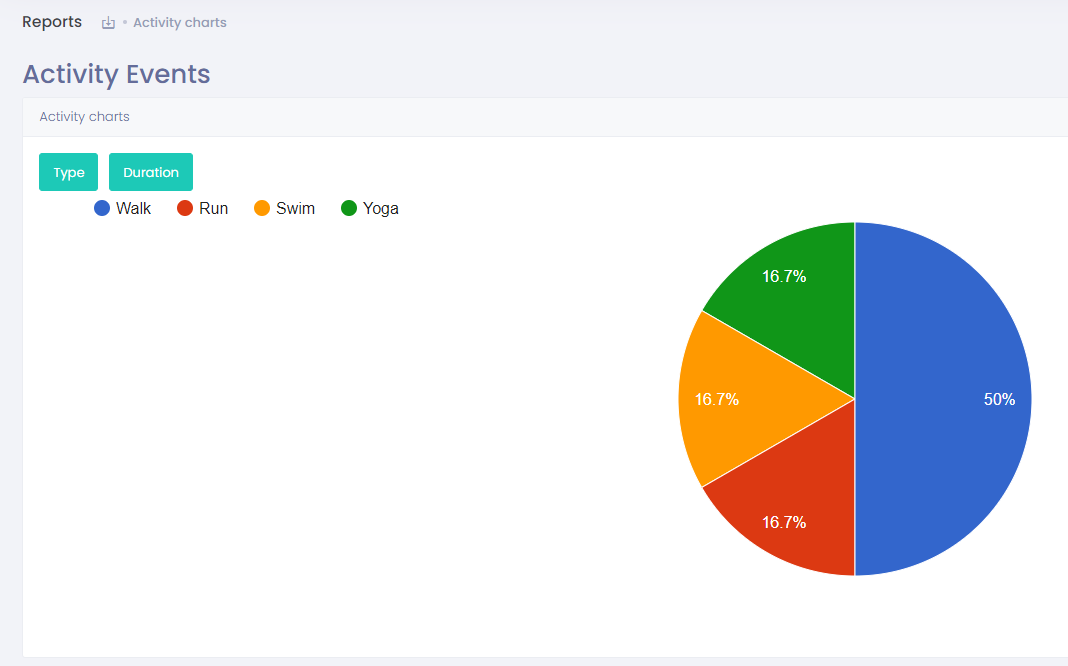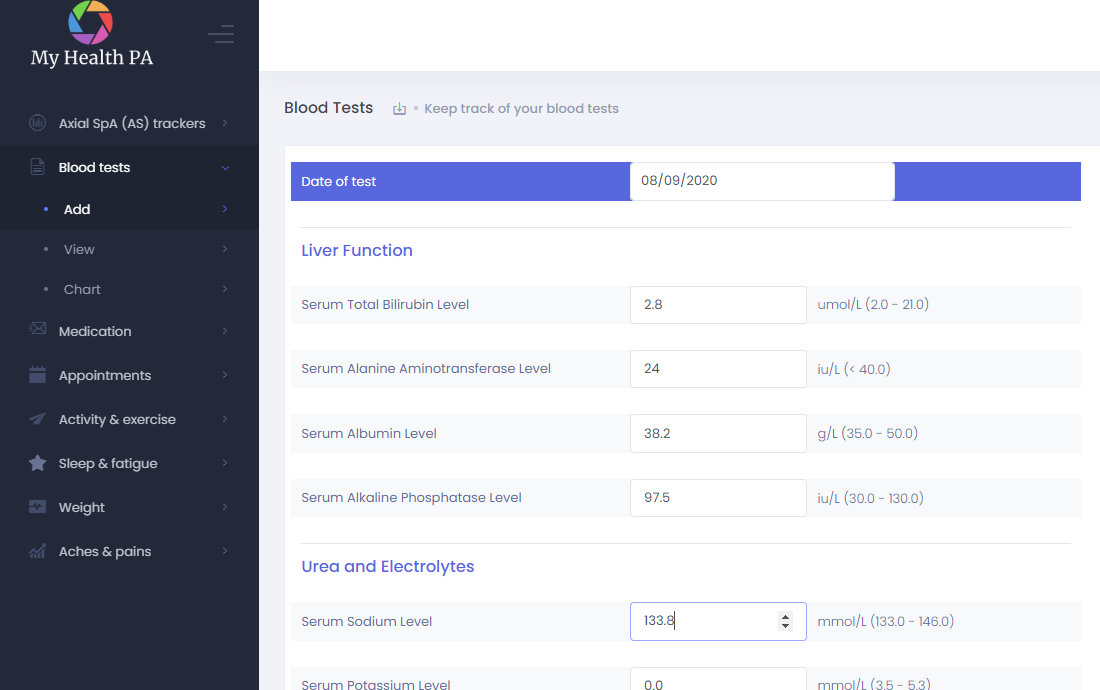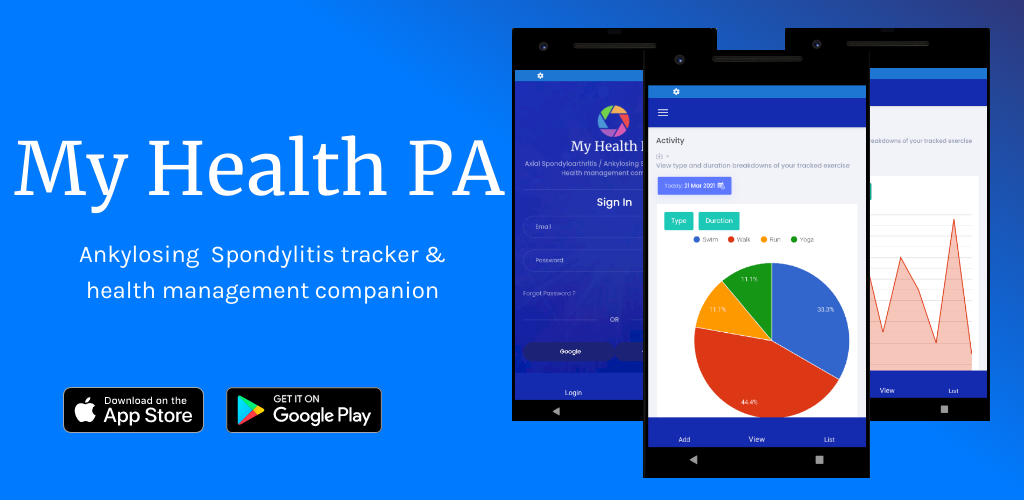Don't have an account?
Sign UpLiving with Axial Spondyloarthritis (Ankylosing Spondylitis): Tracking Symptoms and Managing Your Condition
For many people with axial spondyloarthritis (axial SpA)—also known as ankylosing spondylitis (AS)—getting a diagnosis can take years. In fact, the average time to
diagnosis in the UK is 8.5 years.
But once you have a diagnosis, what comes next?
 Axial SpA (AS) progresses differently for everyone. Symptoms can vary in severity and change over time, influenced by multiple factors. To monitor the condition
effectively, specialists use the Bath Indices, a set of standardized measurements. These involve answering a series of 0–10 scale questions to assess how axial SpA (AS)
has impacted daily life over the past week.
Axial SpA (AS) progresses differently for everyone. Symptoms can vary in severity and change over time, influenced by multiple factors. To monitor the condition
effectively, specialists use the Bath Indices, a set of standardized measurements. These involve answering a series of 0–10 scale questions to assess how axial SpA (AS)
has impacted daily life over the past week.
Treatment and Lifestyle Strategies for Axial SpA (AS)
Fortunately, there are now several treatment options available for managing axial spondyloarthritis, including:
- Non-Steroidal Anti-Inflammatory Drugs (NSAIDs)
- Disease-Modifying Anti-Rheumatic Drugs (DMARDs)
- Biologic Therapies and Biosimilars
Beyond medication, regular exercise, an active lifestyle, and a balanced diet play a crucial role in improving long-term outcomes—just as they do for many other chronic conditions.
The Importance of Tracking Symptoms Over Time
Most people with axial SpA (AS) receive care from a rheumatology department, often through outpatient appointments. However, these appointments can be months apart. When meeting with your healthcare provider, it’s essential to give an accurate picture of your symptoms, not just from the past week, but over the last six months or even a year. This helps your doctor make informed clinical decisions and tailor your treatment plan effectively.
Stay on Top of Your Appointments with a Tailored Condition Summary
To help you make the most of your rheumatology appointments, our platform includes an appointment calendar that automatically compiles a personalized condition summary in the lead-up to your visit.
This summary brings together key insights from your symptom tracking, including:
- Fluctuations in pain, stiffness, and mobility over time
- The impact of axial SpA (AS) on your daily life
- Medication effectiveness and any side effects
- Trends in fatigue, sleep quality, and overall wellbeing
Empowering You to Take Control of Your Condition
Our platform provides the tools you need to track your symptoms accurately and have that data readily available when it matters most. Using clinically recognized measures, our product ensures that both patients and healthcare professionals can easily interpret and act on the information—helping you take control of your health with confidence.
Bath AS Functional & Disease Activity Index Trackers
My Health PA's easy to use BASFI and BASDAI trackers allow you to keep tabs on how your Axial Spondyloathritis is affecting you using standard, validated tracking metrics that rheumatology healthcare professionals will know and understand.
![]() Used to measure the severity of axial SpA (AS) for many years now, the trackers work
equally as well on a mobile device as on a laptop or desktop computer, so you're able to keep track on the go.
Simply tap or drag the slider for each question to your desired answer, then view your average BASFI and BASDAI scores for the past year by clicking the Scores
link. Repeat as often as you're able; daily, weekly or monthly, but remember - the more often the scores are recorded, the more accurate the picture you build up.
Used to measure the severity of axial SpA (AS) for many years now, the trackers work
equally as well on a mobile device as on a laptop or desktop computer, so you're able to keep track on the go.
Simply tap or drag the slider for each question to your desired answer, then view your average BASFI and BASDAI scores for the past year by clicking the Scores
link. Repeat as often as you're able; daily, weekly or monthly, but remember - the more often the scores are recorded, the more accurate the picture you build up.
Fatigue is a major symptom of axial SpA (AS), and several questions in the BASDAI and BASFI questionnaires are specifically about fatigue and tiredness. We have taken that a step further and created a Sleep and Fatigue Tracker. Tracking the amount and quality of sleep can be a strong indicator of how much impact your condition is having on you and being able to keep data on that, and communicate that at your next appointment could be crucial in helping your healthcare professionals give you the most appropriate help.
Health Trackers
 Other factors can have a huge bearing on the the severity of symptoms in people with axial SpA (AS), such as weight, exercise,
and a diet. People have shown improvement in their symptoms when doing more exercise, as
evidenced by studies showing an improvement in BASDAI scores over a
3 to 12 week period
.
Other factors can have a huge bearing on the the severity of symptoms in people with axial SpA (AS), such as weight, exercise,
and a diet. People have shown improvement in their symptoms when doing more exercise, as
evidenced by studies showing an improvement in BASDAI scores over a
3 to 12 week period
.
You can use our Activity & Exercise tracker to record your own activity and look for changes in your BASDAI and BASFI scores over time. There are also factors such as fatigue which are commonly associated with the condition. We have trackers for these which you can use to complement the BASFI and BASDI trackers above.


Health Planners
Download the My Health PA app today - available on iOS and Android
